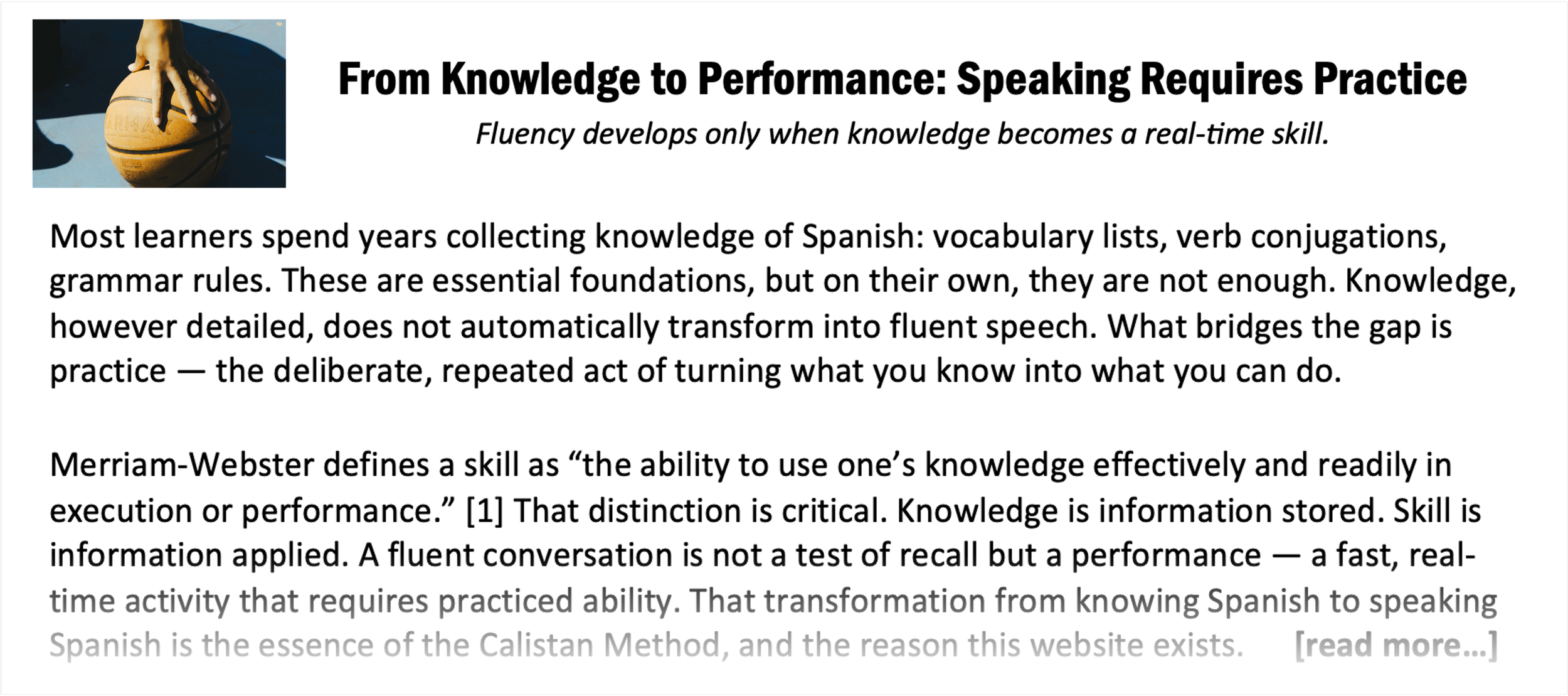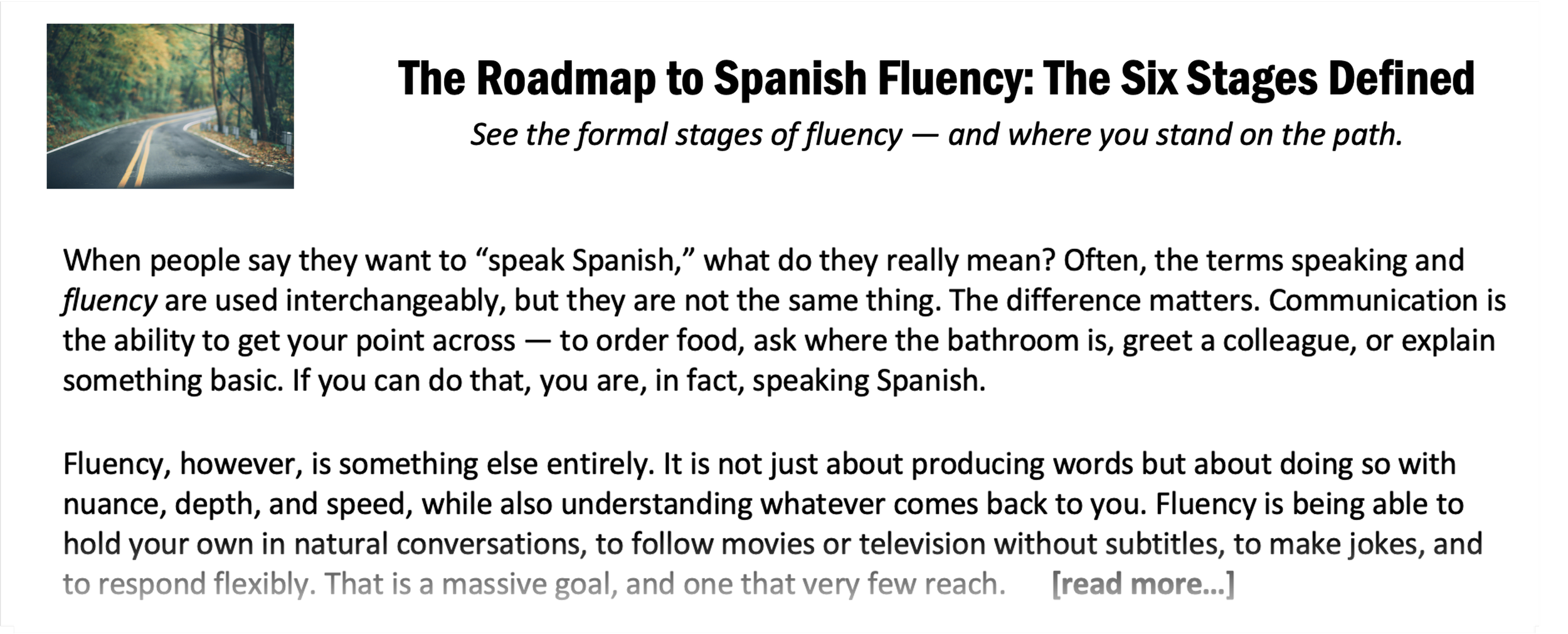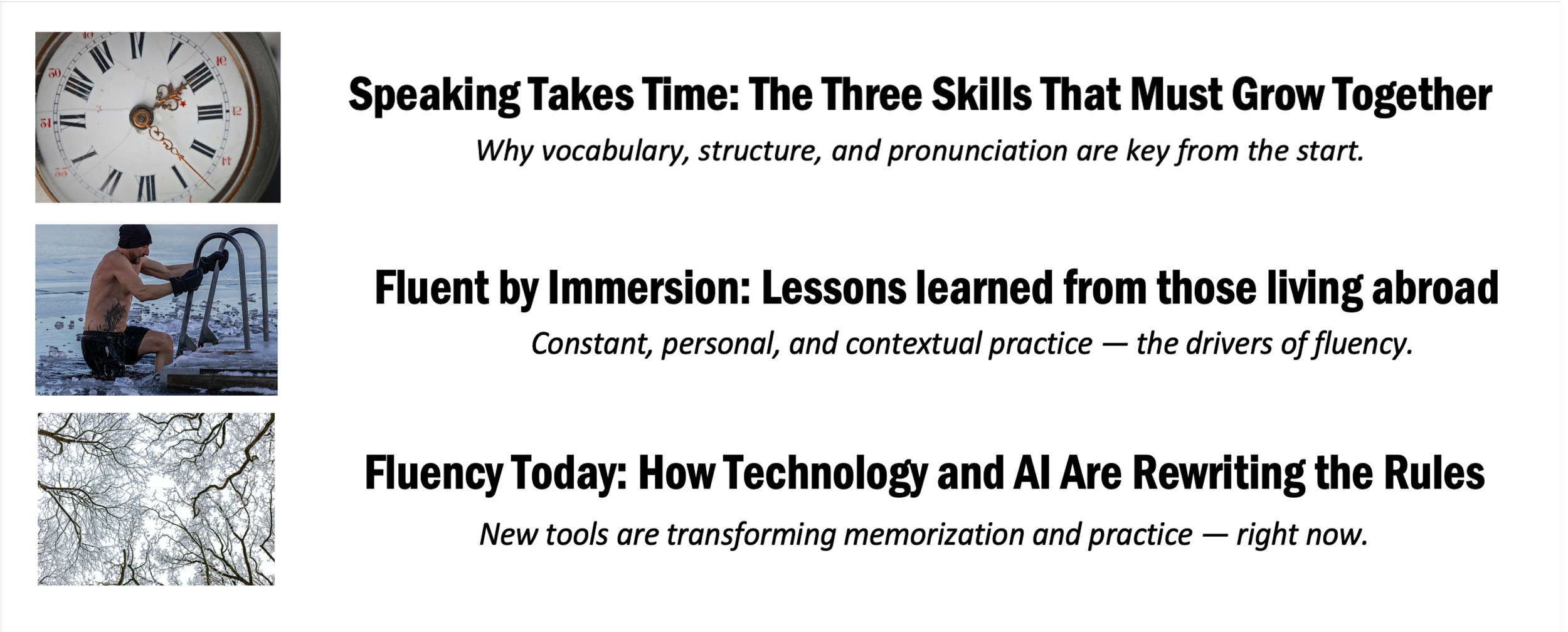
Many Learn Spanish. Few Speak It.
There’s a reason so few make the leap. Speaking is a unique challenge that requires distinct skills and a different approach.
Almost all students struggle when speaking
If you’ve spent months—or even years—studying Spanish and still struggle to speak with any level of fluency, you’re not alone. Reading and writing are one thing. Speaking is something else entirely.
It’s fast. It’s unpredictable. And what feels like practice is really performance—done under pressure, in real time, with little room to pause or revise. In short, even persistent effort can be frustrating—and most people simply give up.
Speaking takes more than knowledge — it requires building real-time skills that traditional study rarely provides.
Why Practice is the Key to Speaking
Speaking isn’t just information recall. It’s performance — like music or sports. You don’t master a performance skill by studying it; you master it by practicing it. The full paper explores why practice is the missing step between study and conversation.
Where Are You on the Path to Fluency?
Language learning can feel endless without a map. Fluency unfolds in six distinct stages. A description of each stage helps you see where you stand. And understanding the path forward, progress becomes concrete, motivating, and far easier to measure.
Insights for the Path to Fluency
Fluency isn’t a mystery — it’s a process. Some example papers below explore the key challenges every learner faces, from patience and immersion to technology and practice, offering practical lessons to keep your progress steady and sustainable.
Sign Up to Learn More
Stay Connected— get occasional updates, new articles, insights and early invitations. Just a few emails a year, no spam.


